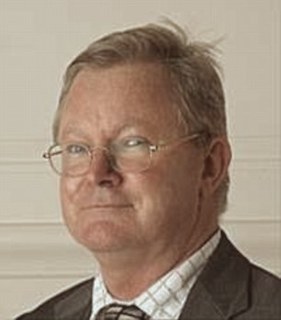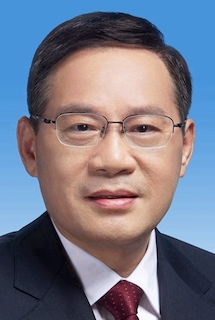
Electric vehicles (EVs) could turn out to be a technology too far, just as the supersonic Concorde passenger aircraft proved to be, writes a New Zealand Cambridge University professor.
Concorde was “soon recognised as a beautiful piece of engineering that could never be a commercial success,” says Michael Kelly, Emeritus Professor of Engineering at the UK institution. “The situation (with EVs) now is akin to that of Concorde in its first years of service.”
Wellington-born Kelly, 74, writes in London daily The Telegraph that the costs were so high during Concorde’s operation that only the rich could afford the tickets.
“The man in the street has failed to embrace EVs for the same reason he failed to embrace Concorde nearly 50 years ago: the extra cost (of an EV) represents an insurmountable barrier.
“There is a difference this time. Once developed, Concorde was forced to stand or fall in the commercial marketplace, but the (UK) government has decided that the public are going to take up EVs whether they like it or not.
“But compulsion may not work. And even if people are compelled to accept EVs, the engineering problems of generation and charging infrastructure may be insurmountable.”
Kelly says the UK will need 40,000 professional engineers for the next 30 years just to expand the electricity supply industry – generation, transmission and distribution – to cope with the 170.0% increase in demand required by the planned transition to all-electric transport and heating, both industrial and domestic.
He told former New Zealand Prime Minister Jacinda Ardern something similar in July 2021, after appraising the Climate Change Commission’s (CCC) advice for net-zero in 2050.
CCC advised electrifying pretty much everything in New Zealand: ground transportation, industrial, commercial, and residential heating, and increasing by 75.0% electricity generation, transmission and distribution.
“I have carried out a comprehensive study of the resources of people and materials needed between now and 2050 and estimate the cost at about $NZ600 billion for these projects,” Kelly wrote to Ardern.
“It is my view that the Climate Change Commission’s aspirations are not achievable in the time frame, may not be the most cost effective, and may not contribute to lowering global CO2.”
In the UK, demand for EVs fell away last year, down slightly on 2022 figures, according to the Society of Motor Manufacturers and Traders. Just one in 11 private new car buyers in 2023 chose an EV. Used EVs accounted for just 1.6%c of the overall used car market. On the other hand, used sales of petrol-electric hybrid and plug-in hybrids climbed 40% and 25.1% respectively.
Official forecasts for the take-up of EVs in the UK over the next few years have been slashed going into 2024. EVs were expected to account for 67% of the market by 2027. But that figure has now been revised by the Office for Budget Responsibility down to just 38%.
Elsewhere in the world, writes Kelly, “EV sales appear to have stalled and unsold stock has started piling up at ports and on sales forecourts. Since improvements in performance continue year on year, these unsold vehicles will probably have to be dumped or scrapped.”
Adds Peter Wells, director of the Centre for Automotive Industry Research at Cardiff University: “There is a bigger-picture story here. After a period of growth, interest in EVs isn’t as strong as it once was. There is a loss of momentum in the market.”
In New Zealand, the end of the Clean Car Discount (CCD) on December 31 was behind an expected collapse in new EV sales in January, where 244 EVs were down 80% on the 1211 numbers in January 2023, according to NZ Transport Agency figures.
EV sales with the aid of CCD in 2023 totalled 21,036 units, an average 1753 a month for an unprecedented 19.0% share of the overall light passenger vehicle market at year’s end. Last month’s 244 sales therefore plummeted 86% on the monthly average in 2023.
CCD came into force in June 2021. New and used vehicles with combustion engines that didn’t meet the government’s C02 exhaust emissions standards were penalised with a tax. The so-called ‘ute’ tax – initially a maximum $8250 – went towards rebates on the price of cleaner burning EVs or hybrids.
The EV market has become increasingly cut-throat as low-priced Chinese manufacturers expand internationally. China has hundreds of EV manufacturers, many building obscure models purely to take advantage of generous federal and provincial government tax credits. This, say analysts – Prof. Kelly among them – explains the thousands of earlier model EVs decaying unsold in vast lots in the fringes of China’s major industrial cities.
Such overproducing by state-owned Chinese enterprises has led to worsening deflation and a disastrous property bubble that has now burst. The biggest casualty is China Evergrande, the world’s most indebted real estate developer. It owes creditors more than $NZ537 billion, including a reported $NZ32 billion to investors in its EV division. A court in Hong Kong has ordered China Evergrande be liquidated.
Last year, China – which controls much of the rare earths crucial for EV batteries – introduced a new four-year set of subsidies to succeed the $NZ94 billion of EV incentives in place between 2016 and 2022. European Union president Ursula von der Leyen immediately responded, saying the global automotive industry was being overrun by cheap Chinese EVs with prices kept “artificially low by huge state subsidies.”
Chinese Premier Li Qiang told world leaders at Davos last month that China was “a country most worthy of trust” and that choosing to do business there “is not a risk, but an opportunity”. But foreign investors are fleeing China. Last year was the first time foreign companies not only failed to reinvest in China, but started selling their existing investments, pulling more than $NZ168 billion out of its economy, according to the Peterson Institute for International Economics.
• Toyota chairman Akio Toyoda expects EVs to reach at most 30 per cent market share. The remaining 70 per cent, he told a business forum in Japan, will be taken up by petrol-electric hybrids, hydrogen fuel cell, and fossil-fuel cars. This time last year Toyoda was under fire from big investors for questioning the wisdom of a rapid transition to fully electric vehicles. Since January 1, Toyota’s Japanese shares are up 21%. Global sales of Toyota’s hybrids were up 32% in 2023.
• Ford reported sales of its hybrid models jumped nearly 43% in January, while EV sales slumped by nearly 11%. General Motors confirmed it plans to offer a plug-in hybrid in North America.
• South Korea’s battery maker SK Innovation has warned investors it expects slower growth in EV demand. SK supplies carmakers including Ford, Volkswagen and Hyundai.
• EV sales in the US last year totalled 1.2 million, a 7.6% market share of overall new vehicle numbers against 5.9% in 2022. Teslas – Model Y, X, and 3 – accounted for 55%, or almost 640,000 units. Some automotive analysts expect EVs to reach 8.0% in 2024; others predict little or no growth in a US presidential election year.
• US rental company Hertz last month reversed plans to massively expand its BEV fleet. Weak demand is forcing it to sell off 20,000 BEVs and replace them with petrol-powered vehicles. The about-face is expected to cost Hertz almost $NZ500 million. Three years ago, Hertz announced plans to buy 100,000 Teslas and 60,000 BEVs from Polestar, Volvo’s electric subsidiary.
• Volvo says it will no longer fund Polestar and is preparing to sell much of its 48% share in the loss-making EV operation to Chinese company Geely, Volvo’s parent company. Geely says it will provide “full operational and financial support” to Polestar. Polestar has struggled to meet sales targets and says it needs an injection of about $NZ2.1 billion to pull it out of the red.
• In Germany, the Volkswagen Group cut production of VW, Audi, and Porsche EVs due to falling demand and the end of government subsidies to business customers. The VW Group also cancelled plans late last year to build a new $NZ3.2 billion factory that would rival the efficiency and productivity of Tesla’s German plant.
• In France, the government is working on new incentives to encourage consumers to buy vehicles made in Europe rather than China. Previously, EVs made in China were taking up around 30% of French government subsidies. The French incentives include highlighting the carbon emitted in the Chinese manufacturing process. China’s EV industry is still heavily reliant on coal-fired generation.
• In Australia, high-profile motoring journalist Paul Gover says that Aussies only have to look at showroom sales in 2023 to see the severe decline in EV numbers. Of 1.2 million new vehicle sales across the ditch last year, 82,000, or 7.8 per cent, were EVs. Aussie car dealers are not taking used EVs as trade-ins, says Gover. He calls EVs an “experiment”. Take away government subsidies and demand is not there.


